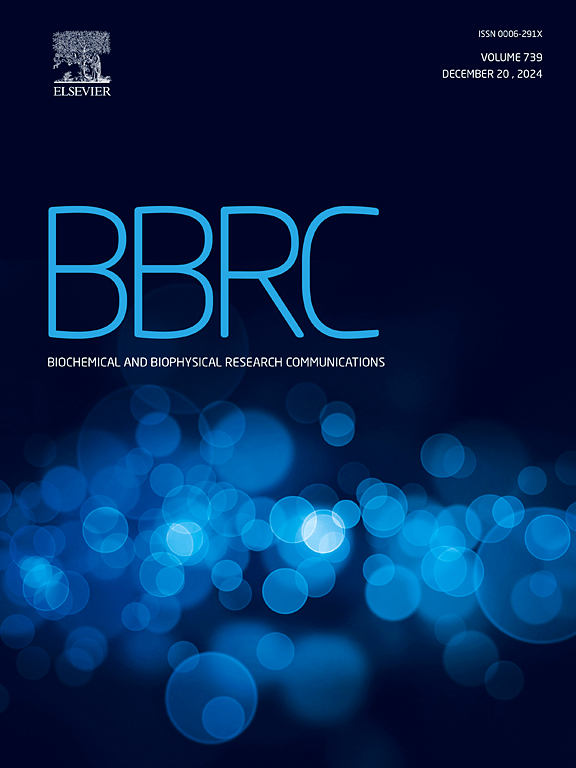High-dose vitamin C blocks HOCl production by Myeloperoxidase: A potential therapeutic strategy
IF 2.5
3区 生物学
Q3 BIOCHEMISTRY & MOLECULAR BIOLOGY
Biochemical and biophysical research communications
Pub Date : 2025-06-18
DOI:10.1016/j.bbrc.2025.152213
引用次数: 0
Abstract
High-dose vitamin C therapy for cancer, originally advocated by Linus Pauling (Proc Natl Acad Sci, 1976, 73, 3685–3689), remains a subject of ongoing debate. In this study, we investigate why only pharmacological doses are effective and explore the reasons behind inconsistent therapeutic outcomes. Our data suggest that the bona fide cause of toxicity was oxidized vitamin C rather than hydrogen peroxide. We found that vitamin C at millimolar concentrations, directly inhibits hypochlorous acid generation by myeloperoxidase, through competition with chloride rather than by scavenging the hypochlorous acid that is formed. Products of vitamin C oxidation reacted with the thiols of peroxiredoxin 2 and GAPDH, but failed to react with the cysteine of p16INK4a. The growth and viability of Jurkat cells were affected by oxidized vitamin C. These experiments were conducted in the presence of catalase, demonstrating that the biological effects were due to the products of vitamin C oxidation and not hydrogen peroxide. These findings may have practical implications for the treatment of cancer and diseases in which the deleterious effects of neutrophil activation are observed. For intravenous administration of pharmacological vitamin C to have a beneficial effect, its concentration in the blood must be maintained at millimolar levels and this can only be achieved via maintenance infusion. As a proof-of-concept, our data suggest that to enhance anticancer therapy interventions, it is crucial to implement treatments that facilitate the oxidation of vitamin C in the bloodstream.

大剂量维生素C阻断髓过氧化物酶产生HOCl:一种潜在的治疗策略
高剂量维生素C治疗癌症,最初是由Linus Pauling (Proc Natl Acad Sci, 1976, 73, 3685-3689)提倡的,仍然是一个持续争论的主题。在这项研究中,我们调查了为什么只有药理学剂量是有效的,并探讨了治疗结果不一致的原因。我们的数据表明,毒性的真正原因是氧化维生素C而不是过氧化氢。我们发现,毫摩尔浓度的维生素C通过与氯化物竞争而不是通过清除形成的次氯酸,直接抑制髓过氧化物酶产生次氯酸。维生素C氧化产物与过氧化物氧还蛋白2的硫醇和GAPDH反应,但不能与p16INK4a的半胱氨酸反应。氧化维生素C对Jurkat细胞的生长和活力有影响。这些实验是在过氧化氢酶存在的情况下进行的,表明生物效应是由于维生素C氧化的产物而不是过氧化氢。这些发现可能对观察到中性粒细胞活化的有害作用的癌症和疾病的治疗具有实际意义。为了使药理学维生素C的静脉注射产生有益的效果,它在血液中的浓度必须维持在毫摩尔水平,这只能通过维持输注来实现。作为概念验证,我们的数据表明,为了加强抗癌治疗干预,实施促进血液中维生素C氧化的治疗是至关重要的。
本文章由计算机程序翻译,如有差异,请以英文原文为准。
求助全文
约1分钟内获得全文
求助全文
来源期刊
CiteScore
6.10
自引率
0.00%
发文量
1400
审稿时长
14 days
期刊介绍:
Biochemical and Biophysical Research Communications is the premier international journal devoted to the very rapid dissemination of timely and significant experimental results in diverse fields of biological research. The development of the "Breakthroughs and Views" section brings the minireview format to the journal, and issues often contain collections of special interest manuscripts. BBRC is published weekly (52 issues/year).Research Areas now include: Biochemistry; biophysics; cell biology; developmental biology; immunology
; molecular biology; neurobiology; plant biology and proteomics

 求助内容:
求助内容: 应助结果提醒方式:
应助结果提醒方式:


